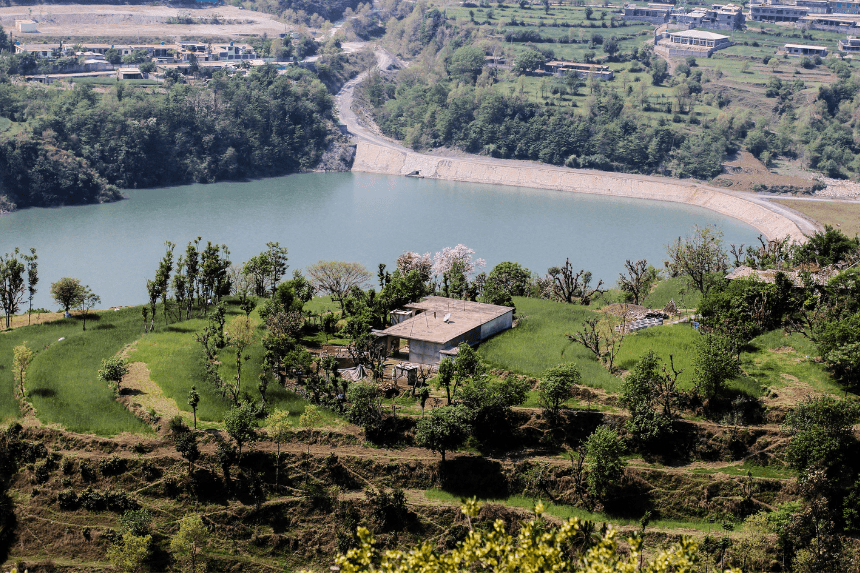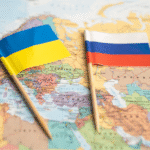To stay near the India-Pakistan border war region, particularly along the Line of Control (LoC) in Kashmir, is to exist in a country of steady uncertainty and risk. The LoC, an extraordinarily militarized boundary that divides Kashmir between India and Pakistan, is not just a geopolitical line but a day-by-day fact that profoundly impacts the lives of hundreds of civilians. For citizens, peace is fragile, brief, and always overshadowed by way of the risk of violence.
- What Does Life Look Like Along the India-Pakistan Border Conflict Zone?
- Why Did the Recent Escalation After the Pahalgam Attack Occur?
- How Does the India-Pakistan Border Conflict Affect Civilians?
- What Is the History of the Line of Control and Why Is It Significant?
- How Have Ceasefires Affected the India-Pakistan Border Conflict?
- Why Should the International Community Care?
- What Actions Can Help Address the India-Pakistan Border Conflict?
- Conclusion
The ongoing India-Pakistan border warfare has formed the place’s social, economic, and humanitarian landscape for many years. This article explores what life is like along this unstable border, the historical context, recent escalations, and why the sector should take note of the human cost of this conflict.
What Does Life Look Like Along the India-Pakistan Border Conflict Zone?
Living along the India-Pakistan border battle isn’t always pretty much geography; it’s miles about dwelling with unpredictability and common interruptions to day-to-day life. The Line of Control cuts through mountainous terrain and villages where communities have lived for generations. These groups face demanding situations that few outdoor the vicinity can fully understand.
Every time tensions upward thrust, families must abandon their houses and rush to underground bunkers to escape from shelling. Schools close for extended periods, healthcare becomes inaccessible, and local economies grind to a halt. Livestock is lost, plants are left untended, and infrastructure, including homes and hospitals, regularly suffers intense harm.
One Pakistani writer who has studied the location notes, “Families alongside the LoC are caught among the decisions of two nuclear-armed rivals. The consequences of the India-Pakistan border warfare move beyond the army to affect education, health, and livelihoods.” This announcement underscores the profound vulnerability civilians undergo amid ongoing hostilities.
Why Did the Recent Escalation After the Pahalgam Attack Occur?
The fragile calm alongside the LoC changed into shattered following the Pahalgam assault, triggering a sharp escalation in hostilities. Both India and Pakistan engaged in heavy artillery shelling across the border, resulting in vast civilian casualties and destruction.
At least sixteen civilians had been killed on the Indian side, while Pakistan reported approximately 40 deaths, even though information on specific reasons remains unclear because of the chaotic nature of the battle. The shelling destroyed homes, colleges, and hospitals, forcing thousands of families to are seeking for refuge in bunkers or temporary shelters.
This flare-up is an example of ways fast peace alongside the India-Pakistan border conflict line can be dissolved. Despite a ceasefire settlement in 2021 that held for nearly 4 years, tensions reignited with devastating results for border groups. Read another article on the Kashmir Conflict: Indiaand Pakistan
How Does the India-Pakistan Border Conflict Affect Civilians?
The human value of the India-Pakistan border conflict is staggering. Civilians are regularly stuck in the crossfire, and the continued violence disrupts each element of their lives. Each violation of the ceasefire forces households to depart their homes, often for months. Displacement ends in the loss of livelihoods, with farmers unable to generally tend to their fields and small enterprise proprietors facing economic ruin.
Education also suffers. Schools are regularly closed because of safety concerns, leaving kids without access to fundamental gaining knowledge of for prolonged periods. Hospitals and clinics, important at some point in instances of peace and conflict alike, are regularly damaged or inaccessible, worsening health consequences in an already vulnerable population.
In late 2016, more than 27,000 people were displaced along the border because of ceasefire violations and cross-border firing. The trauma because of dwelling in consistent worry has long-lasting mental influences on kids and adults alike. Without a decision, these hardships tend to compound, perpetuating cycles of poverty and instability.
What Is the History of the Line of Control and Why Is It Significant?
The Line of Control changed into initially mounted as a ceasefire line in 1949 following the first India-Pakistan warfare over Kashmir. It changed into formally renamed the Line of Control underneath the Simla Agreement of 1972. Stretching approximately 740 kilometers, this boundary divides Kashmir into Indian-administered and Pakistan-administered territories.
Unlike internationally recognized borders, the LoC remains a de facto boundary, closely militarized and often contested. It has grown to be one of the most fortified and volatile borders globally, with thousands of troops stationed along both sides.
This militarization, blended with the unresolved reputation of Kashmir, has grown to become the LoC into a flashpoint for ongoing clashes. Experts frequently describe it as a “border drawn in blood,” reflecting decades of warfare, displacement, and loss.
How Have Ceasefires Affected the India-Pakistan Border Conflict?
Ceasefire agreements have performed a complicated function in this war. After heavy combating within the early 2000s, a ceasefire turned into declared in 2003, which caused a reduction in violent incidents for several years. However, the ceasefire broke down in 2008, and preventing escalated over again via 2013.
The renewed ceasefire of February 2021 created hope for lasting peace, with a sizeable drop in border incidents until 2025. Yet, recent escalations have shown how fragile those agreements remain. The underlying political disputes and mistrust retain to fuel tensions alongside the India Pakistan border warfare area.
Why Should the International Community Care?
The India-Pakistan border conflict includes nuclear-armed international locations with a record of wars and proxy battles. Escalations can destabilize South Asia and affect worldwide peace and protection.
More importantly, the battle influences tens of millions of civilians stuck within the crossfire. They face the risk of loss of life, harm, displacement, and lengthy-time period socio-financial disruption. Peace projects have to prioritize human security along with political agreements.
The international network can play a critical position via encouraging speak, supporting humanitarian help, and promoting struggle resolution strategies that include the voices of affected civilians.
What Actions Can Help Address the India-Pakistan Border Conflict?
Humanitarian resource packages that assist displaced families and offer important services in conflict zones are important to assuaging suffering. Supporting those projects can enhance health, schooling, and dwelling conditions for those impacted.
Raising recognition approximately the human price of the struggle via media and educational structures allows to build empathy and inspire constructive talk. It also can have an effect on policymakers to pursue peaceful solutions as opposed to army escalation.
Governments and policymakers should be recommended to pursue sustained talk focused on peaceful decision. Including local voices in peacebuilding efforts is critical to make sure lasting change.
Fostering local cooperation on improvement and infrastructure rebuilding can create monetary possibilities and improve dwelling conditions. This, in flip, can lessen the appeal of conflict and sell balance in the long time.
Conclusion
The India-Pakistan border struggle is not simply a political dispute; it’s miles a daily warfare for survival for those residing alongside the Line of Control in Kashmir. While ceasefires provide brief respites, the enduring instability impacts each factor of civilian lifestyles—from fitness and schooling to protection and economic wellness.
Understanding the records, modern realities, and human impact of this conflict is critical for promoting powerful solutions. Only via sustained peace efforts and humanitarian help can the long-suffering communities along the LoC begin to rebuild their lives unfastened by fear.








